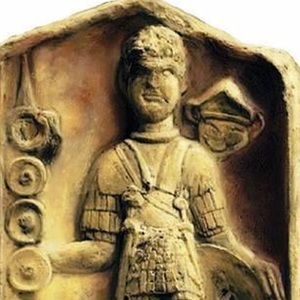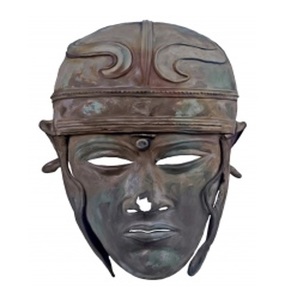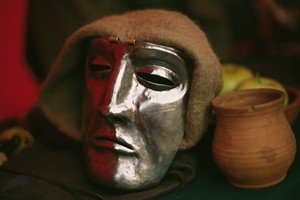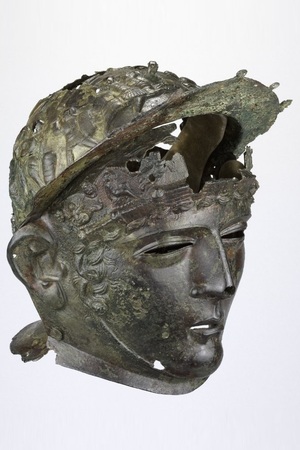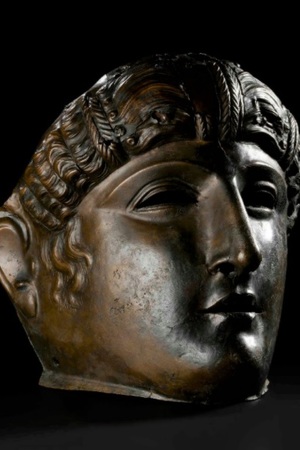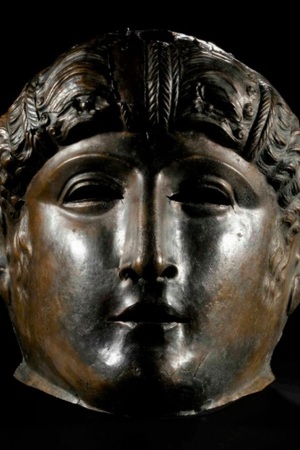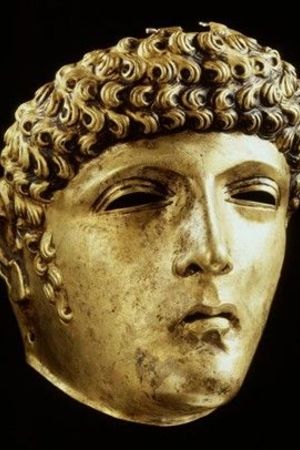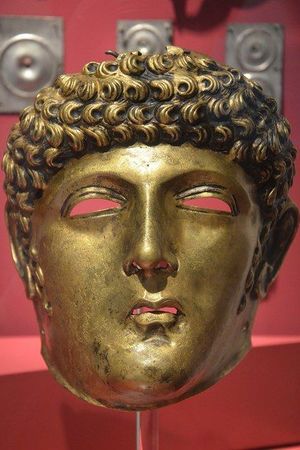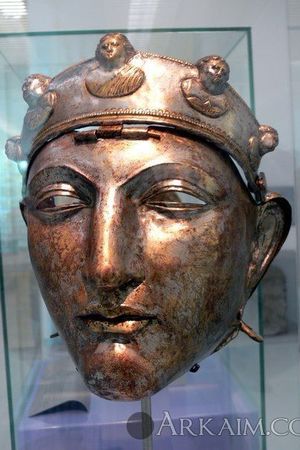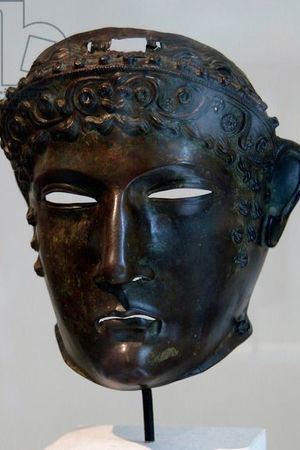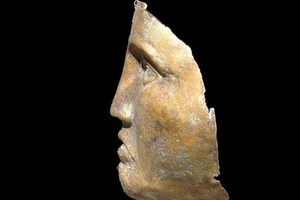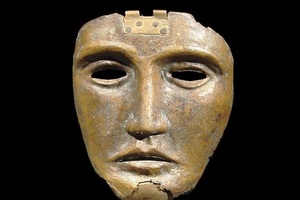Larva
Larva (Latin: larva) is a metal mask worn together with a helmet in the Roman army. The mask provided good protection for the face, but primarily had a symbolic, status value. The face depicted on the mask often represented a person highly revered by the Romans, for example, masks have been found with the presumed face of Alexander the Great. The larva was made of iron or brass, and was often silver-plated.
There are very few images of soldiers wearing a larva, so the question of who exactly could wear the mask in the Roman army is controversial. Historians mainly adhere to the theory that the mask was worn by representatives of the standard-bearing group (aquilifer, vexillarius, signifer, imaginifer) and cavalrymen.
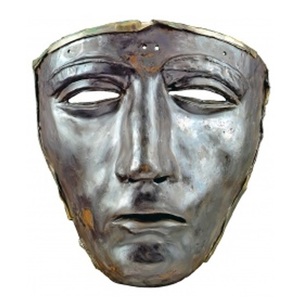 Mask (Kalkriese type) from Kalkriese, near the town of Bramsche, Osnabrück, Lower Saxony, Germany. Iron with a bronze border and the remains of a silver shackle. Early 1st century AD
Mask (Kalkriese type) from Kalkriese, near the town of Bramsche, Osnabrück, Lower Saxony, Germany. Iron with a bronze border and the remains of a silver shackle. Early 1st century ADThere are many archaeological finds of larva masks, which vary in shape and construction, and are often found together with helmets, which allows them to be identified as a military attribute.
Related topics
Standard-bearing group of the legion, Aquilifer, Vexillary, Signifer, Imaginifer, Equites - Cavalrymen

 Gallery
Gallery






